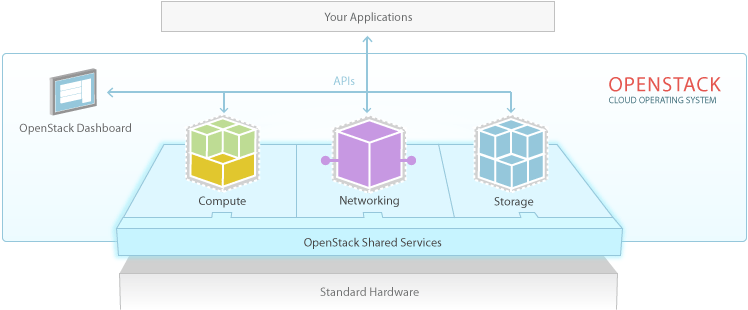Last week our CTO Steve Nice attended the official OpenStack training course in central London. With this fantastic open source project released on the 17th of April, we at Reconnix are putting ourselves at the forefront of this emerging technology.
As the first ever UK Amazon Web Services partner, we pride ourselves on being a well respected key player in AWS implementations, we aim to repeat that success and are on track to be recognised as the UK’s leading technical authority on OpenStack. Steve describes his experiences and vision for this great open source project.
“It’s very early days for OpenStack, it’s almost reminiscent of Linux 15 years ago, everyone is loving the technology, but what is it’s use and what are the biggest barriers to entry? As well as learning implementation details of the technology, I was keen to understand these two critical business questions.
The biggest immediate problem is that it’s updated too frequently, and there are lot of backwards compatibility breaks. I think on balance, to accelerate the technology this is probably a necessary evil, but it’s still frustrating. Some of my coursemates were attending from the Netherlands and commented that they were out of date already. So from my point of view, with the addition of bleeding edge technology such as Software Defined Networking you really need to maintain two platforms; one for the latest stable version, and one dedicated to R&D for the version in the pipeline.
In the next version (dubbed Ice House) due for release on the 17th of April, a new feature for provisioning fresh servers via PXE boot will be deployed giving the architect the option to fire up bare metal machines from scratch. This is particularly important as virtualisation doesn't work for all applications and not everything can be clouded. The process is essentially the same as spinning up an image for virtualisation but having luxury for bare metal servers is a significant game-changer.
There were six of us on the course and the pace was excellent. Despite the high levels of complexity, the pitching of the material was spot on. The only thing I did notice was that as the networking is SDN, it’s incredibly complex, and was reflected in my scores in the mini-quizzes at the end of each module (95% normally and 56% for SDN)
The trainer from Marantis was over from France but his English was perfectly easy to understand and did a very good job of laying out the detail. Marantis are leading an open source project called fuel and really helping drive the technology forward.
So, the main features of the Open Stack are currently:
- Nova: The powerful compute engine originally developed by NASA.
- Neutron: Which provides the tools for implementing the SDN.
- Cinder & Swift : Take care of both object and block storage respectively.
- Keystone is authentication service that's pulls all these services together in a secure manner.

So it’s nice and modular, and unlike something like Eucalyptus, you can choose whichever elements you think are suitable for your architecture. For example, you could just use Swift as you might use Amazon S3
I think it’s worth noting that the complexity of Neutron has grabbed the attention of Cisco. If hardware networking devices are on their way out in favour of virtualisation then that threatens their business, but wisely they have just invested one billion dollars into research into OpenStack and no doubt their considerable expertise will be used to develop powerful virtual networking devices.
For Reconnix, I see this being at the core of our future cloud offering and I’m keen to get all our teams trained up so we can start deploying this technology to help our clients with their ever increasing business challenges.
